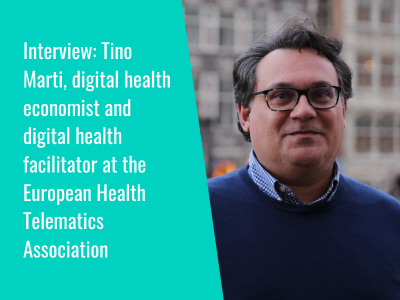Join us as we take a deep dive into digital health and innovation in Estonia, to find out more about the nation’s digital transformation and how it is embracing technology in the realms of health and care.
Electronic health records, the national health information system, and electronic prescriptions
Firstly: what does the digital landscape look like?
Estonia’s “digital society”, e-Estonia, is home to the nation’s health services, offering citizens the opportunity to complete tasks such as accessing health information and ordering prescriptions online. Patients can view and update privacy preferences for their medical records via the online portal, and an electronic ID card is used to keep these records secure. Data from Estonia’s various healthcare providers is integrated into the system, which functions like a centralised, national database, allowing practitioners to access patient records, test results, and image files such as X-rays, from a single, digital file.
The Estonian National Health Information System is the central information system, which holds the medical information, medical history, and medical documentation for citizens. It also connects all of Estonia’s e-health services, and is central to the functioning of services such as the nation’s eAmbulance service, which offers ambulance medics the ability to access patient data and medical history prior to attending an emergency, and to input their case data to provide the receiving hospital with notes ready for their arrival.
A recent update to Estonia’s Health Portal was aimed at increasing user-friendliness, eradicating complex medical terminology, and presenting data in a clearer way for users. It now offers patients information on a wide range of health topics, references to websites for further information, personalised recommendations, and reminders of upcoming appointments. Aims for future development include the addition of new services such as a section on personalised medicine, invitations to screenings, and the ability to complete assessment questionnaires prior to appointments.
On prescriptions, Estonia’s e-Prescription service is a centralised digital system for issuing and managing prescriptions, allowing doctors to issue prescriptions electronically, and enabling patients to pick them up at a pharmacy using their ID card. The e-Prescription service can also retrieve information from the national health insurance fund, meaning that a patient’s entitlements to state medical subsidies are also visible to pharmacists at point-of-collection. Nationally, 100 percent of prescriptions are said to be issued electronically, and patients are able to retrieve repeat prescriptions by emailing, Skyping or telephoning their doctor.
2020 saw the roll-out of the Estonian Health Insurance Fund’s healthcare decision support system, which offers reminders about treatments and medications, as well as providing updated guidelines to inform clinical decision-making, with the guidance of an AI algorithm.
Interoperability
Interoperability has been a key feature of Estonia’s digital health landscape, and the need for different organisations and systems to work together led to the development of X-Road, an “open-source software and ecosystem solution that provides unified and secure data exchange between private and public sector organisations”. X-Road helps to connect different information systems, transmit large data sets, and perform searches across several information systems simultaneously.
In 2021, the World Health Organisation published a document on Estonia’s use of digital technologies in ensuring continuity of access to essential medicines during the COVID-19 pandemic, noting that the Estonian Ministry of Health’s recognition of the importance of interoperability of national digital systems represented a transparency which “helped to build public support and trust for the health system and digital health services”. The report further highlighted that the functionality of X-Road as a “secure and open internet-based platform that facilitates the integration of data from various databases”, presented a secure data exchange layer which is “crucial when building and operating digital health services”.
Research on e-solutions in community pharmacy in Estonia
A study published in SAGE Digital Health explored the impact of e-solutions on Estonian community pharmacies, finding that electronic systems have “overall greatly improved Estonian pharmacy services, accuracy and flow of consultations, and accessibility of medicines”, but that “more support and active involvement is still needed from government agencies for full implementation”.
Conducting a literature review of peer-reviewed literature and grey literature, authors found a variety of digital functionalities within community pharmacy, including the presence of two main online pharmacy commodities info systems, which provide information on availability and cost of medicines in all Estonian pharmacies. They highlighted that both are updated daily, being used by pharmacy staff and doctors to check the availability and price of medicines when prescribing, and since COVID-19 are being used by the State Agency of Medicines to monitor availability of generic medicines.
Another key e-solution that the authors explored during their study was Estonia’s e-pharmacist pharmacy decision support system, which is capable of automatically providing information on the side bar whenever a barcode is entered into the system. Authors found that the solution was capable of providing information such as “the indication, active substance, available strengths, dosage forms, dosings for different age groups or indications”, and more.
They concluded that “the E-pharmacist acts as a powerful decision-support system which allows the pharmacist to quickly assess the suitability of the medicine and provide faster and more accurate consultations”; although its connection to only one of two available pharmacy sales programs meant it was not available for all community pharmacists.
Overall, authors concluded that “digital systems implemented in community pharmacies have enhanced the pharmacy service in Estonia by allowing faster and more accurate consultations, supporting patient safety, and improving access to medicine”, even though the digitalisation of pharmacy services “has gained little support” from healthcare authorities in the country.
Citation: Tuula A, Sepp K, Volmer D., E-solutions in Estonian community pharmacies: A literature review. Digital Health. 2022 DOI: 10.1177/20552076221113731.
Research on data quality in Estonia’s National Health Information Service for digital decision support
Another study evaluated data quality within the Estonian National Health Information System (ENHIS) for digital decision support, finding examples of varying data quality and the ongoing need for humans to screen data and resolve inconsistencies, making “data reuse for tasks like AI training for digital decision support systems challenging”; however, the authors note that the digital health platform has positive levels of acceptance and use.
The authors collected usage data on ENHIS from its initial release in 2008 through to 2021, and explored use of saved health data by measuring queries made to the EHR from healthcare professionals and patients; and quality of captured data, including differences between structured and unstructured data, using a Data Quality Vector to explore entries on smoking status for five randomly selected patients. The DQV was used in particular to “assess in which dimensions data quality shifts occur between documents over time”.
Results showed “data quality shifts in several dimensions between documents”, including in completeness, consistency, duplicity, correctness, spatial stability, contextualisation, and predictive value. Authors also found that “having information in both structured and unstructured forms creates redundancies, leading to inconsistency”, creating challenges when it comes to data reuse for decision support.
On usage patterns, authors findings suggest that “the number of new documents added per year to the EHR system seems to be reaching its current maximum, with no sharp increases observed since 2019”, but that “a sharp increase in the number of queries can be observed for the same time span”. The increase in queries is interpreted by authors as meaning “both patients and healthcare professionals have been getting useful information from the system in recent years”.
On the potential for digital decision support, authors point to the possibility of embracing this where data is standardised and structured, and state that the ENHIS’s current contents being “more granular” and “stored in a free text format instead of a machine-readable, structured form”, means that human interpretation is still required.
However, authors conclude that findings demonstrate that “the use of nationwide electronic health records embedded in a digital health platform is well accepted and widely used by healthcare professionals and patients, despite the sometimes questionable quality of the data”. They similarly conclude that at present, the ENHIS’s data presents difficulties for “AI training, effectively querying data, or performing statistical analyses”, and that for this to happen, “high-quality, structured data would be needed”.
Bertl M, Kankainen K J I, Piho G, Draheim D, Ross P, Evaluation of Data Quality in the Estonian National Health Information System for Digital Decision Support. CEUR Workshop Proceedings. 2023. Available at: https://ceur-ws.org/Vol-3440/paper1.pdf
In related news, we recently took a deep dive into the state of digital in health in Saudi Arabia, looking specifically at progress toward the nation’s Vision 2030 for health, the newly-released National Biotechnology Strategy, the Saudi Genome Program, and the latest on wider digital transformation.
- 1
- 2














